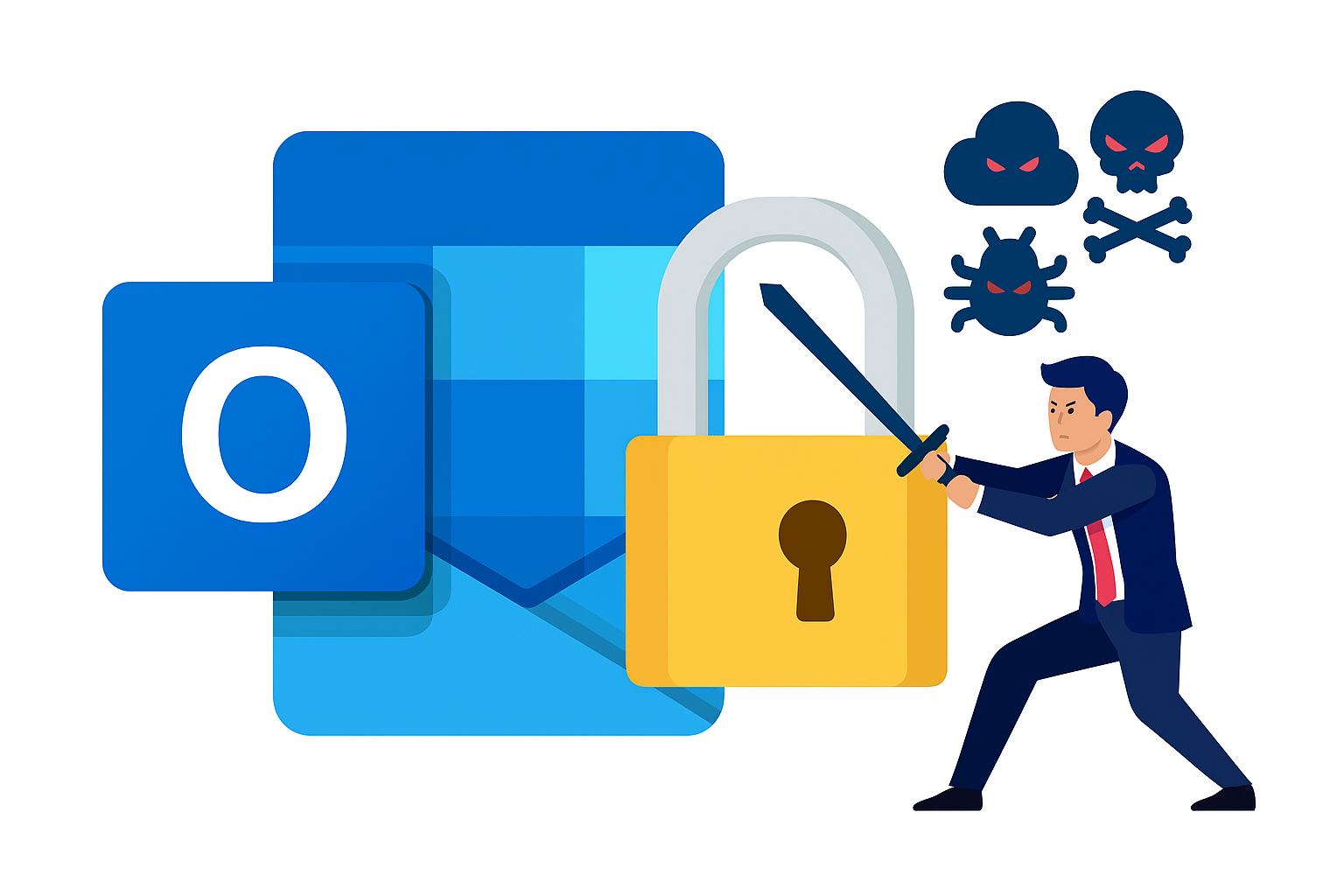Table of Contents
Phishing Attacks and URL Refresh Headers?
Phishing attacks aren’t just sticking around—they’re getting smarter, sneakier, and more dangerous. While most of us are getting better at spotting obvious scams, attackers are constantly refining their tactics to slip under the radar. One of these tactics involves exploiting a tiny, often overlooked piece of web architecture, the HTTP Refresh header.
In this post, I’m going to break down exactly how this technique works, why it’s so effective, and, most importantly, how you can protect yourself from falling victim to it.
What Are HTTP Response Headers?
Before we dive into the nitty-gritty of the Refresh header, let’s make sure we’re on the same page about what HTTP response headers are. Every time you visit a website, your browser sends a request to the server where the site is hosted. The server then responds, not just with the content you’re trying to access, but also with a set of instructions called HTTP response headers.
Think of these headers as the browser’s roadmap—they tell it how to handle the content, manage security, and deal with data. Some common headers include:
- Content-Type - This tells your browser what type of content it’s receiving, whether it’s text, images, or other media.
- Cache-Control - This guides your browser on how long to store the content before checking for updates, which can help improve load times and reduce bandwidth usage.
- X-Content-Type-Options - This one instructs your browser not to guess the content type, ensuring that files are handled securely based on their declared type, which helps prevent certain types of attacks like MIME-based exploits.
These headers are essential for a smooth and secure browsing experience.
The Refresh Header
Now, let’s get to the star of this show...the Refresh header. This little instruction tells your browser to reload a page or hop over to a new URL after a set period. It’s handy for things like refreshing live data or automatically redirecting you after a form submission. But, like many tools, it can be used for more sinister purposes (nothing's safe anymore!).
Cybercriminals have figured out how to misuse the Refresh header by embedding malicious redirects into seemingly harmless pages. And this here is where things get dangerous.
How Attackers Leverage the Refresh Header for Phishing
Picture this: You get an email that looks like it’s from your bank, asking you to update your account information. You click the link, and it takes you to a page that looks legit—maybe it’s even your bank’s login page. But before you know it, the Refresh header does its dirty work, silently redirecting you to a malicious site designed to steal your credentials or infect your device with malware.
Here’s where it gets even sneakier...
Imagine that the page you’re redirected to greets you with a message like, “Welcome back, [Your Name]!” or “We’ve recognized your device, please confirm your password.” The site uses the email address that was embedded in the Refresh header to make it look like it already knows who you are. This little touch of personalization makes the scam even more convincing because it feels like you’re interacting with a legitimate service that recognizes you automatically.
Why does this work so well? Because we’re used to seeing personalized experiences online—whether it’s Netflix suggesting what to watch next or Amazon recommending products based on your history. When a phishing site mimics this behavior, it’s easy to lower your guard and proceed without questioning the legitimacy of the request.
This tactic is particularly insidious because it takes advantage of our trust in the familiar. The subtle personalization reinforces the illusion that you’re on a secure, recognized site, which is exactly what the attacker wants you to believe.
This example makes it clear how attackers exploit the Refresh header to not only redirect you to a malicious site but also to make that site seem trustworthy through the illusion of familiarity and personalization. It’s a simple yet effective way to illustrate the danger.
Why This Tactic Is So Effective
The real power of this tactic lies in its subtlety and your potential lack of awareness. Let’s be honest—how many of us really think about HTTP headers when we’re browsing the web? Even if you’re tech-savvy, the redirection is so quick and the initial page so convincing that it’s easy to miss what’s happening.
Plus, traditional phishing detection methods might not catch these redirects right away, especially if the link looks like it’s leading to a trusted site. This makes the attack much harder to detect and prevent.
Directly Embedding Email Addresses has Scalability Challenges
Some researchers have reported cases where attackers embed the target’s email address directly into the Refresh header to make the phishing attempt feel more personalized. This insight, discussed in a recent article on the subject, highlights how this tactic might boost the attack’s credibility. However, doing it at scale introduces complexities that make it impractical for large campaigns.
If an attacker tries to embed a single email address in the Refresh header for each target, it works great for a one-off spear-phishing attempt. But when you’re trying to hit thousands or even millions of users, things get complicated fast. Managing unique HTTP responses for every target isn’t just impractical—it’s also a red flag that could get the attacker caught.
More Realistic Alternatives for Attackers
So, what do attackers actually do? They go for more scalable methods, like:
-
URL Parameters with Dynamic Content Generation
Here’s the real-world approach. Attackers embed a unique identifier in the URL—like a token—and use it to pull the target’s info from a database. This way, when you click on the link, the server generates a phishing page that’s personalized just for you, without the complexity of embedding your email in the header.
Example: You might get a link likehttp://malicious-site.com/?id=12345. When you click it, the server knows exactly who you are and customizes the page accordingly. -
Redirection Services:
Attackers often use intermediary redirection services to decode the token in the URL and send you to a phishing page that feels tailored to you. This makes the attack scalable and harder to track back to its source.
Example: The link might first take you to a benign-looking domain, which then redirects you based on the token to a customized phishing site. -
Server-Side Scripting:
For more targeted attacks, server-side scripts come into play. These scripts customize the phishing content based on your email or other identifiers passed via the URL, making the scam even more convincing.
Example: A script processes your token, pulls up your details, and serves up a phishing page that looks like it was made just for you.
These methods allow attackers to scale their operations while still delivering that personal touch that makes phishing so effective.
Protecting Yourself
So, how do you protect yourself against these sneaky tactics? Here’s what I recommend (yes, I know some of these are obvious, humor me though):
-
Be Skeptical of Email Links
- Always take a moment to think before you click on any link in an email, especially if it seems urgent or unsolicited. Even if it looks like it’s from someone you trust, double-check the sender’s address and ask yourself if the content makes sense.
- Hover over the link to see where it’s really taking you, and if you’re still unsure, manually type the URL into your browser instead of clicking.
-
Leverage Advanced Email Security Tools:
- Invest in security tools that go beyond just looking at email content—they should also analyze headers for any suspicious behavior. These tools can help catch phishing attempts before they even reach your inbox.
- Make sure your email system integrates with these advanced tools, offering comprehensive protection.
-
Regularly Audit Your HTTP Headers:
- If you’re running a website or managing email servers, make it a habit to audit your HTTP headers. Minimizing the information they expose and setting up security headers like
Content-Security-Policy (CSP)andX-Frame-Optionscan prevent a lot of potential issues.
Here are some good industry resources for these best practices (remember, they're called best practices because they are usually proven to be effective):
- If you’re running a website or managing email servers, make it a habit to audit your HTTP headers. Minimizing the information they expose and setting up security headers like
- Educate and Train Your Team
-
- Don’t underestimate the power of knowledge. Regularly run phishing simulations and provide training so that your team can spot suspicious emails and links before they click.
- An empowered workforce is your first line of defense against phishing attacks.
Stay Vigilant, Stay Safe
Staying informed and vigilant is your best defense. Understanding how attackers can exploit something as seemingly small as the Refresh header puts you in a better position to protect yourself and your organization. Make it a point to review your security practices regularly, keep your team trained, and never let your guard down.
Cybersecurity isn’t just about the tools you use—it’s about the habits you build and the awareness you maintain every day.
Explore More Articles
Say goodbye to Phishing, BEC, and QR code attacks. Our Adaptive AI automatically learns and evolves to keep your employees safe from email attacks.

/Concentrix%20Case%20Study.webp?width=568&height=326&name=Concentrix%20Case%20Study.webp)







.webp?width=100&height=100&name=PXL_20220517_081122781%20(1).webp)







